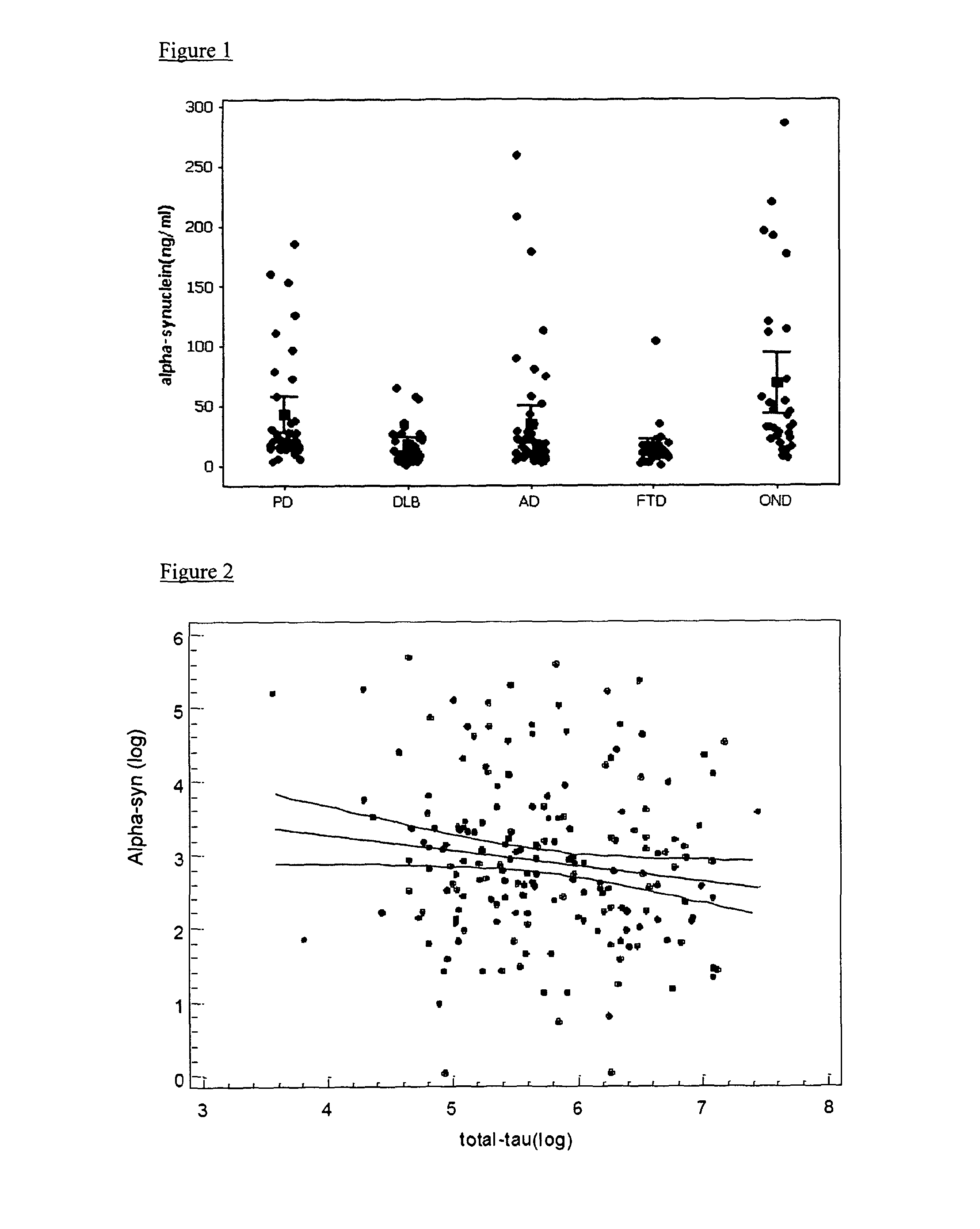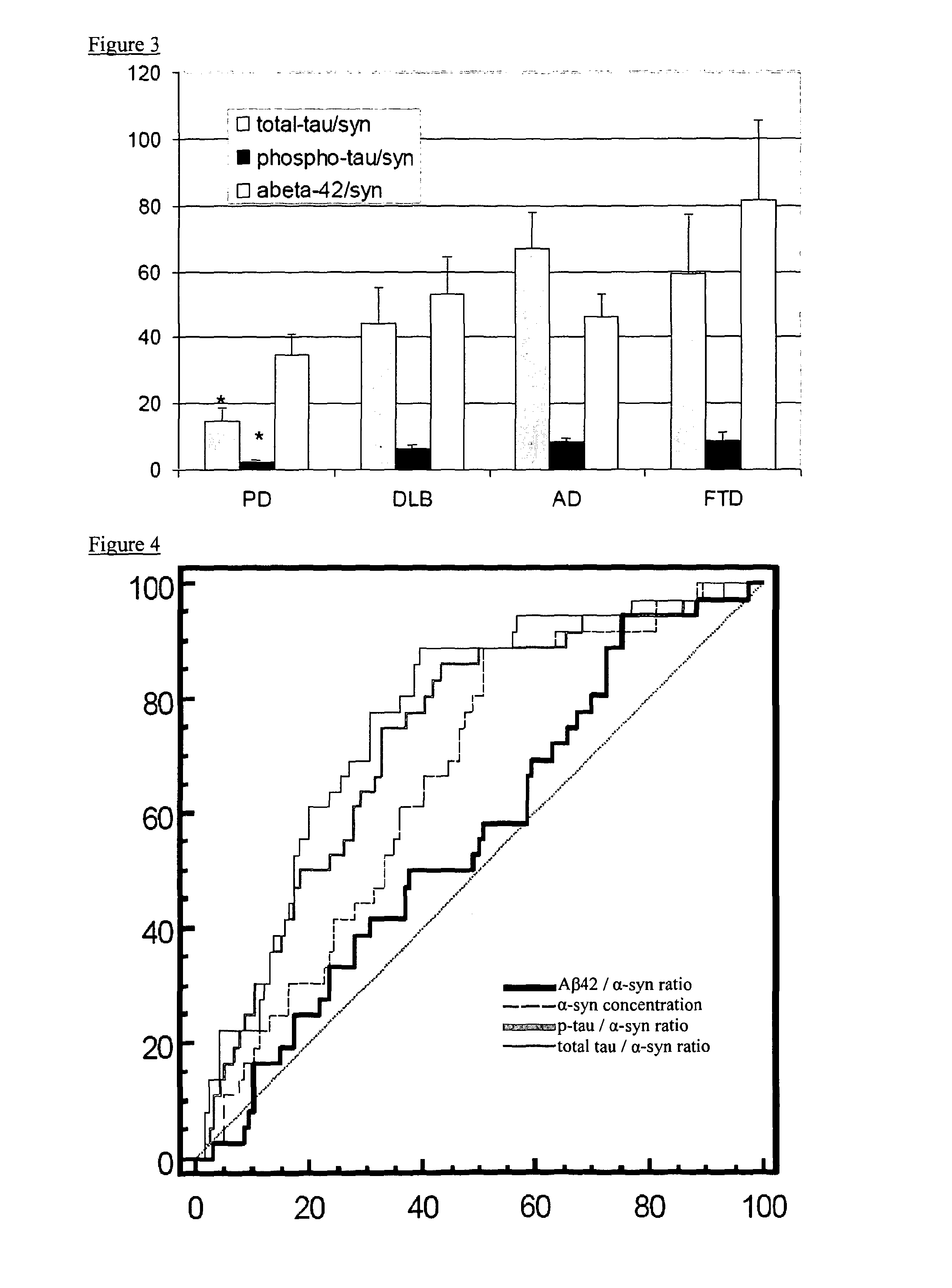Method for diagnosis
a parkinson disease and patient technology, applied in the field of diagnosis, can solve problems such as difficulties in accurately diagnosing patients, and achieve the effect of reducing the level of this ratio
- Summary
- Abstract
- Description
- Claims
- Application Information
AI Technical Summary
Benefits of technology
Problems solved by technology
Method used
Image
Examples
example
Methods
Patients
[0132]The subjects included in this study were prospectively recruited in the period June 2005-April 2009. They represent a consecutive series of patients referred to our Centre for diagnostic evaluation. All of them were thoroughly assessed including accurate neuropsychological testing, neuroimaging (CT / MRI) and lumbar puncture. CSF was collected in Day-Service regimen, according to the hospital standard protocol and with the local Ethical Committee approval, after informed written consent was given by the patient or the relative / caregiver, in case of subjects with dementia. Idiopathic PD was diagnosed according to United Kingdom Parkinson's Disease Society Brain Bank. All of them were treated with L-dopa alone or associated to dopamine agonists, with good control of motor symptoms (mean UPRDS-III: 20.2±5.3), and were functionally independent (Hoehn and Yahr 1-3). None of them showed clinically relevant signs of cognitive impairment. Probable DLB was defined accordin...
PUM
| Property | Measurement | Unit |
|---|---|---|
| Fraction | aaaaa | aaaaa |
| Fraction | aaaaa | aaaaa |
| Fraction | aaaaa | aaaaa |
Abstract
Description
Claims
Application Information
 Login to View More
Login to View More - R&D
- Intellectual Property
- Life Sciences
- Materials
- Tech Scout
- Unparalleled Data Quality
- Higher Quality Content
- 60% Fewer Hallucinations
Browse by: Latest US Patents, China's latest patents, Technical Efficacy Thesaurus, Application Domain, Technology Topic, Popular Technical Reports.
© 2025 PatSnap. All rights reserved.Legal|Privacy policy|Modern Slavery Act Transparency Statement|Sitemap|About US| Contact US: help@patsnap.com



